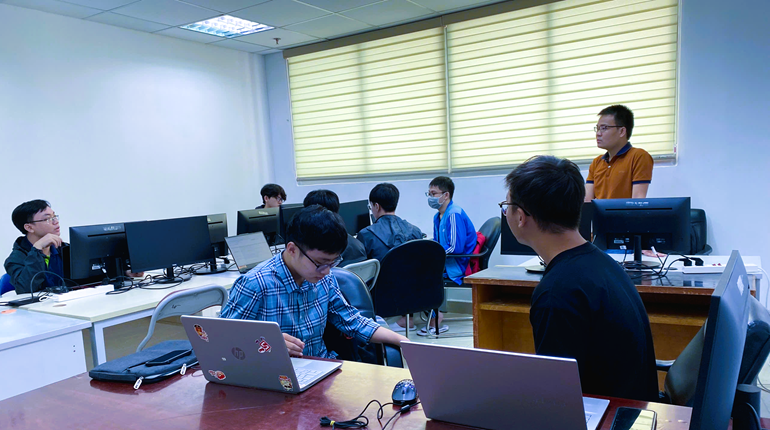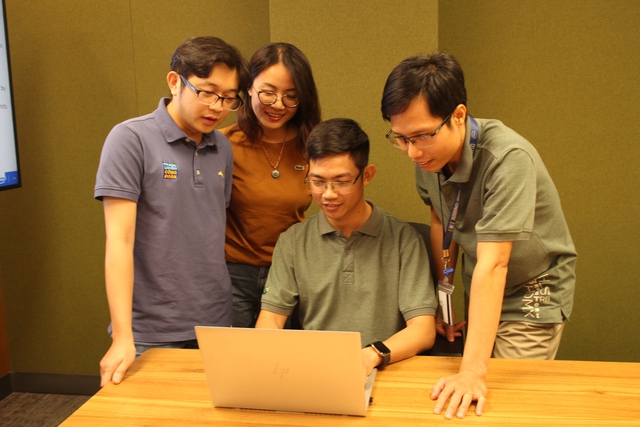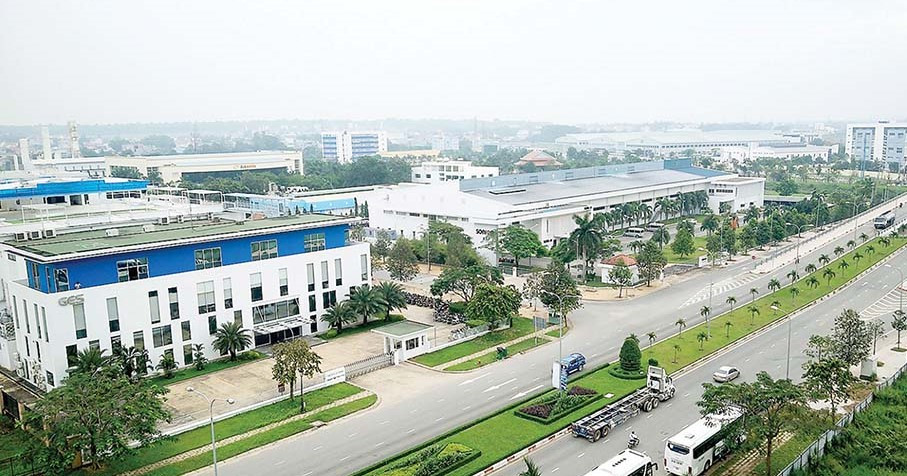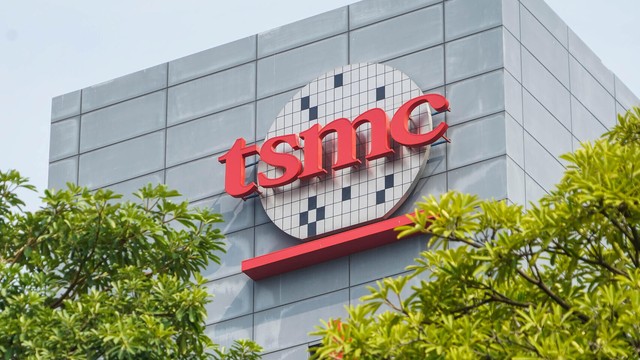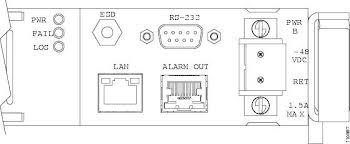
EIA-232 Description
The RS232 specification defines both the Mechanical, Electrical, and Functional characteristics. RS232 is an Unbalanced (Single Ended), unidirectional (point-to-point) interface - signal is referenced to ground.
RS232 drivers feature a controlled slew rate. Normal output levels are +5 volts. The RS-232 interface uses Asynchronous Framing [Known data width, 8bits] with NRZ encoding.

The RS232 interface is synchronous when the clocks are used (DA / DB), otherwise its asynchronous.
The RS232 interface is rated to operate up to 20kbps. Use TIA/EIA-562 (low voltage version of RS232) or TIA/EIA 423 for higher data rates.
The maximum cable length is not defined, but the maximum line capacitance is; at 2500pF, with a load impedance of 3K to 7K ohms. This produces a maximum cable length of something less then 20 meters.
The RS-232 interface does not define the [Layer 2] protocol used. Normally data is sent as 7 or 8 bit words [least significant bit]. A START bit marks the beginning of the frame. The start bit is active low [RS232 drivers invert the signaling, so it's active high as seen on the RS232 cable; between +3v and +15v]. The figure above shows a framed 8 bit data word [before inversion]. The data word follows the start bit; a logic high will appear as a low voltage between -3v and -15v when probed on the bus. A parity bit may follow the data word depending on the protocol used. A mark parity bit [always set high] may be used, a space parity bit [always set low] may be used, or an even/odd parity bit may be used. The even parity bit will be a 1 if the number of ones/zeros is even, or a zero if there are an odd number. The odd parity bit will be high if there is an odd number of ones/zeros in the data field. No parity bit is used in the example above. Normally an even parity generator circuit will produce a logic '1' at its output if the data word contains an odd number of ones. When the data word contains an even number of ones then the output of the parity generator will be low. A stop bit will normally follow the data field [or parity bit if used].
The stop bit is used to bring [or insure] the signal rests at a logic high following the end of the frame; so when the next start bit arrives it will bring the bus from a high to low ~ remember we will invert, so on the RS232 cable the stop bit is low and the start bit will transition low to high. Remember TIA/EIA232 does not define the protocol or parity.
Additional comments about the future of RS232, or here; the future of RS232.


EIA-232 Cable Distance vs. Bus Speed
RS232 Pinout:
The RS232 specification only defines the pin-out for a 25 pin D-sub connector;
how ever, the 9 pin is used more often (defined by EIA-574).
A 26 pin connector is also called out in the RS232 spec.
EIA-561 calls out an 8 pin connector (RJ-45).
RS232C indicates a DB25, RS232D indicates an RJ45.
Although this site, in general, calls out DB9 and DB25 style connectors, the real term for a 9-pin D-sub is DE9.
A listing of Dsub connector manufacturers is listed on the D-Sub Connector Manufacturers page.
D-Sub Shell Dimensions,
D-Sub Insert Arrangments.
Many RS232 pinouts listed here are also listed on the RS232 Pinout page.
An RS232 Pinout may also be termed RS232 Signal Assignments.

| Pin # | Signal Name | Signal Description |
| 1 | CD | Carrier Detect |
| 2 | RXD | Receive Data |
| 3 | TXD | Transmit Data |
| 4 | DTR | Data Terminal Ready |
| 5 | GND | Signal Ground / Common |
| 6 | DSR | Data Set Ready |
| 7 | RTS | Request To Send |
| 8 | CTS | Clear To Send |
| 9 | RI | Ring Indicator |
| Pin # | Signal Name | Signal Function | Pin # | Signal Name | Signal Function |
| 1 | ---- | Protective Ground | 14 | SBA | 2nd Transmitted Data |
| 2 | TXD | Transmitted Data | 15 | DB | DCE Element Timing |
| 3 | RXD | Receive Data | 16 | SBB | 2nd Received Data |
| 4 | RTS | Request To Send | 17 | DD | Received Element Timing |
| 5 | CTS | Clear To Send | 18 | ----- | Unassigned |
| 6 | DSR | Data Set Ready | 19 | SCA | 2nd Request To Send |
| 7 | GND | Signal Ground/Common | 20 | DTR | Data Terminal Ready |
| 8 | CD | Carrier Detect | 21 | CG | Signal Quality Detector |
| 9 | --- | +Voltage | 22 | RI | Ring Detector |
| 10 | --- | -Voltage | 23 | CH/CI | Data Signal Rate Detector |
| 11 | --- | ---- | 24 | DA | DTE Element Timing |
| 12 | SCF | 2nd Line Detector | 25 | ---- | Unassigned |
| 13 | SCB | 2nd Clear To Send | -- | --- | ---- |






